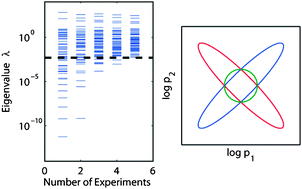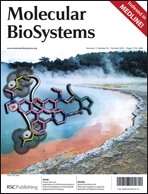Sloppy models, parameter uncertainty, and the role of experimental design†
Abstract
Computational models are increasingly used to understand and predict complex biological phenomena. These models contain many unknown parameters, at least some of which are difficult to measure directly, and instead are estimated by fitting to time-course data. Previous work has suggested that even with precise data sets, many parameters are unknowable by trajectory measurements. We examined this question in the context of a pathway model of epidermal growth factor (EGF) and neuronal growth factor (NGF) signaling. Computationally, we examined a palette of experimental perturbations that included different doses of EGF and NGF as well as single and multiple gene knockdowns and overexpressions. While no single experiment could accurately estimate all of the parameters, experimental design methodology identified a set of five complementary experiments that could. These results suggest optimism for the prospects for calibrating even large models, that the success of parameter estimation is intimately linked to the experimental perturbations used, and that experimental design methodology is important for parameter fitting of biological models and likely for the accuracy that can be expected from them.


 Please wait while we load your content...
Please wait while we load your content...